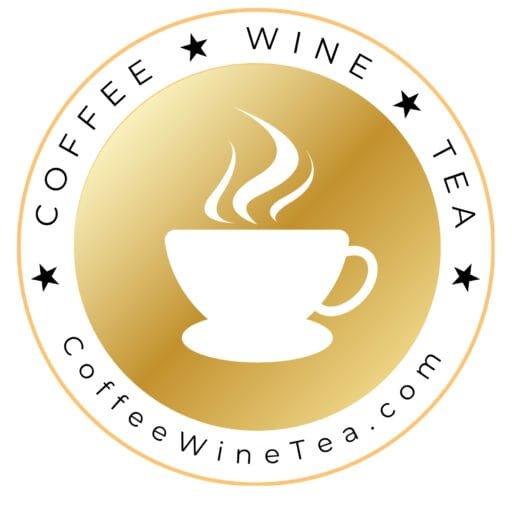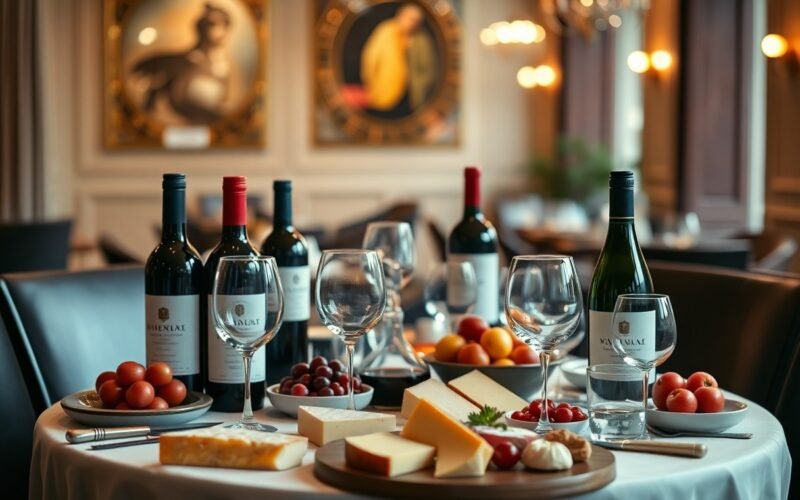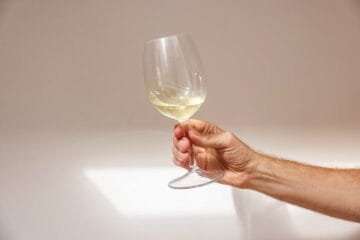Setting the Stage: Why Wine Selection Matters
The right wine can elevate your occasion from ordinary to unforgettable. Pairing a bold Cabernet Sauvignon with a hearty steak not only complements the dish but enhances the entire dining experience. You may not realize that studies show guests often rate a meal 15-20% higher when accompanied by a perfectly matched wine. Consider the mood you wish to create; a sparkling rosé adds a festive touch, while a rich Merlot can bring a sense of warmth and intimacy to gatherings. Each sip can evoke memories, spark conversations, and ultimately, glue your event together.
Key Takeaways:
- Consider the type of event and food pairing: Choose a wine that complements the menu and the overall atmosphere of the occasion.
- Know your guests’ preferences: Take into account the taste preferences of your guests, whether they prefer red, white, sparkling, or rosé wines.
- Don’t shy away from experimenting: Use special occasions as an opportunity to explore new wines, but ensure they are from reputable producers for quality assurance.
Decoding Wine Labels: What to Look For
Understanding wine labels can seem daunting, but they provide imperative information about what’s inside the bottle. Look for the name of the producer, which often reflects the wine’s quality and style. The varietal—indicating the grape type—is also key; it lets you know the primary flavor and characteristics of the wine. Additionally, the region of production can significantly impact the flavor profile, as well as details like vintage, which reveals the year the grapes were harvested. Each of these elements plays a role in helping you select the perfect wine for your occasion.
Grapes: The Building Blocks of Flavor
The grape variety is fundamental to the wine’s flavor and aroma. Whether it’s the fruity notes of a Cabernet Sauvignon or the crispness of a Sauvignon Blanc, the specific type of grape gives you insight into what to expect in terms of taste. Familiarize yourself with a few popular varietals to better align your wine choices with your palate, ensuring a match for your special occasion.
Regions: How Terroir Influences Taste
Region plays a significant role in shaping a wine’s character. Factors like climate, soil type, and elevation contribute to what is known as terroir, influencing the flavors and aromas of the wine. For example, a Chardonnay from California may be rich and buttery due to warm conditions, while one from Burgundy could be more mineral and crisp, reflecting its cooler climate and unique soil. Exploring wines from different regions can elevate your understanding and appreciation for how terroir affects the ultimate tasting experience.
Different regions around the world define their own wine styles, shaped by the local environment. For instance, Italy’s Tuscany is known for robust Sangiovese, often characterized by its tart cherry and earthy notes, perfect for pairing with Italian cuisine. In contrast, Argentina’s Mendoza region produces Malbec with intense fruit flavors and velvety tannins, making it excellent for barbecued meats. By exploring the wines specific to each region and understanding their terroir, you can choose bottles that not only align with your taste preferences but also enhance the overall experience of your special occasion.
Pairing Perfection: Matching Wine to Your Menu
Elevating your dining experience involves more than just picking a good wine; it’s about finding that perfect match for the dishes being served. Different wines bring out distinct flavors in food; for instance, a crisp Sauvignon Blanc pairs beautifully with fresh seafood, while a velvety Merlot complements rich, red meats. The pairing can enhance not just the taste but the overall mood of your gathering. For more insights on Choosing the Perfect Wines for Special Occasions, explore various combinations based on your menu.
The Art of Food and Wine Harmony
Creating harmony between your food and wine involves understanding how different flavor profiles interact. White wines typically work well with lighter dishes, while reds shine with heartier meals. For instance, spicy Asian cuisine can be complemented with an off-dry Riesling that counters the heat. Melding these flavors can take your meal from ordinary to extraordinary, making every bite and sip memorable. Seek to balance acidity, sweetness, and body for optimal synergy on your palate.
Special Occasions: Tailoring Choices to Themes
Your wine selection should resonate with the theme of your occasion, whether it’s a festive holiday gathering or an elegant wedding reception. For example, sparkling wines like Champagne can amplify the celebratory spirit of New Year’s Eve, while a rustic farmhouse gathering could be enhanced by locally sourced wines that echo the region’s offerings. Aligning your wine choice with the theme not only enlivens the atmosphere but also creates a cohesive dining experience that guests will find enchanting.
Tailoring your wine selections to match the occasion’s theme allows you to immerse your guests in a cohesive experience. For instance, if you’re hosting a Mediterranean-inspired dinner, consider serving a light, fruity red like an Italian Chianti alongside homemade bruschetta and pasta. Alternatively, a garden party could feature chilled rosés paired with fresh salads. By thoughtfully curating wines that reflect your chosen theme, you create lasting memories and demonstrate your attention to detail and care for the overall experience.
Budgeting for Quality: Spending Wisely on Wine
Establishing a budget for wine doesn’t mean sacrificing quality. You can find remarkable options at any price point, ensuring your selection aligns with both your financial planning and the sophistication of your occasion. Prioritize quality over quantity by researching wines that deliver the best flavor and overall experience for your dollar. Don’t hesitate to seek out advice from trusted wine experts or friends who share your passion, as they may lead you to hidden gems that won’t break the bank but will impress your guests.
Understanding Price Points: From Affordable to Splurge
Wines typically vary from budget-friendly bottles under $15 to celebrated vintages that can exceed $500 or more. This spectrum means you can cater to both casual gatherings and lavish celebrations. For everyday enjoyment, wines priced between $10 to $20 often showcase excellent quality, while $20 to $50 can elevate a special occasion without straining your finances. High-end selections usually span $50 and above, perfect for those rare moments when you want to treat yourself or commemorate a milestone with something extraordinary.
Best Value Picks: Wines That Taste Expensive
Wines that offer a premium taste without the premium price tag can be found in unexpected places. Many small producers and lesser-known regions craft exceptional wines that rival top labels without the inflated costs. Look for varietals like Malbec from Argentina, Garnacha from Spain, or Côtes du Rhône from France, which consistently deliver robust flavors at a fraction of the cost of more recognized brands. Additionally, many vineyards offer deals or seasonal discounts that make their higher-end selections more accessible, providing you delightful options that don’t skimp on taste.
Exploring value picks can lead you to some hidden treasures. For example, the 2018 Alamos Malbec from Argentina often retails around $15 but offers complex dark fruit flavors and a smooth finish typically associated with wines above $30. Similarly, Spanish Garnacha from regions like Cariñena can surprise your palate at a low price point, showcasing rich berry notes and a balanced acidity. By choosing wisely, you can enjoy high-quality wines that enhance any occasion without overspending.
Exploring Styles: Choosing Between Reds, Whites, and Bubbles
Each type of wine offers a unique experience, providing an array of flavors and aromas to explore. Reds, known for their fuller body and robust flavors, often feature rich notes of berries, spices, or chocolate. Whites, on the other hand, tend to be lighter and crisper, showcasing bright citrus, floral, and stone fruit characteristics. For celebrations, sparkling wines add an extra layer of festivity with their effervescence and vibrant acidity. Selecting the right style can elevate your occasion, creating a harmonious balance between mood and flavor.
The Spectrum of Flavors: Finding Your Preferences
As you explore different wine styles, understanding your palate is key. Experiment with various varietals and regions to determine what resonates best with your taste. You might find that you prefer the boldness of a Cabernet Sauvignon over the subtlety of a Pinot Grigio, or vice versa. Keep notes on your favorites as you discover diverse flavor profiles, enhancing your selection for future occasions.
Seasonal Selections: How Weather Impacts Wine Choice
Weather significantly influences wine selection, impacting both flavor preference and serving temperature. In warmer months, you may gravitate towards refreshing whites, rosés, or sparkling wines, which are crisp and palate-cleansing. Cooler weather invites heartier reds that complement rich, warming dishes. Consider also the potential for seasonal festivals or gatherings; a summery picnic might call for a light Sauvignon Blanc, while holiday gatherings are often suited to a full-bodied Merlot or a festive sparkling option.
Seasonal shifts bring different food pairings and palette moods to the forefront. Wine lovers often associate warmer days with bright and chilled selections, such as a zesty Pinot Grigio or a bubbly Prosecco. The chill in the air of autumn or winter, however, calls for more robust options like a velvety Malbec or a cozy Syrah, both of which can revive your spirit on cold nights. Additionally, the seasonal context of your occasion—be it a summer barbecue or an intimate fall dinner—will guide you toward selecting the appropriate wine to enhance the entire experience.
Elevating Your Experience: Presentation and Serving Tips
Enhancing the presentation of your wine can transform an ordinary moment into an extraordinary experience. When serving, consider these tips to make your selection stand out:
- Opt for elegant glassware that complements the wine type.
- Utilize a decanter for reds to aerate and enhance aromas.
- Pair wine labels with complementary food for a curated experience.
- Place the bottle on a stylish ice bucket to keep it at the ideal temperature.
After these details are focused on presentation, check this guide on how to choose wines to commemorate special occasions for more insights.
The Importance of Temperature: Serving Wine Right
Serving wines at the right temperature significantly influences their taste. Here’s a handy table for reference:
Ideal Wine Serving Temperatures
| Wine Type | Serving Temperature |
| Red Wines | 60-65°F (15-18°C) |
| White Wines | 45-50°F (7-10°C) |
| Rosé Wines | 45-55°F (7-13°C) |
| Sparkling Wines | 40-50°F (4-10°C) |
Optimal temperatures help unlock the wine’s full potential. Chilling white and sparkling wines enhances their refreshing qualities, while slightly warmer reds allow for more complex flavor profiles to emerge.
Glassware and Decanting: Enhancing the Aesthetic
The choice of glassware plays a paramount role in enhancing your wine experience. Using the appropriate glass can amplify aromas and flavors, making each sip more enjoyable. For intricate reds, larger bowls allow for aeration and aroma concentration. In contrast, narrower glasses offer a directed flow, highlighting the nuances in whites and bubbles. Additionally, decanting not only serves the practical purpose of aeration but can also add an element of drama to the experience, inviting conversation and setting a refined tone at any gathering.
Final Thoughts: Elevate Every Occasion with the Perfect Bottle
Selecting the right wine can significantly enhance any special event, making moments memorable. For instance, a crisp Sauvignon Blanc perfectly complements seafood, while a robust Cabernet Sauvignon pairs beautifully with a hearty steak. Don’t shy away from exploring sparkling wines for celebrations—they add a festive flair, whether it’s for a wedding or a milestone birthday. By focusing on quality and understanding your guests’ preferences, you can elevate your gathering from ordinary to extraordinary. Consider visiting a local wine shop for personalized recommendations; their expertise can guide you toward the ideal bottle that aligns with your occasion and budget.
FAQ
Q: What factors should I consider when selecting wine for a special occasion?
A: When choosing wine for a special occasion, consider the following factors:
1. Food Pairing: Match the wine with the meal being served. For instance, white wines like Chardonnay or Sauvignon Blanc go well with seafood and poultry, while red wines such as Cabernet Sauvignon or Pinot Noir complement red meats and rich dishes.
2. Guest Preferences: Take into account the preferences and tastes of your guests. Knowing whether they tend to favor red, white, or sparkling wines can enhance their experience.
3. Occasion Type: The nature of the event can influence your choice. For formal gatherings like weddings, classic choices such as Champagne or a sophisticated Bordeaux can set the tone, while casual gatherings can be complemented by approachable wines like a Moscato or a light Pinot Grigio.
Q: How do I select the right type of wine for a formal event?
A: For a formal event, focus on elevated selections that will impress your guests.
1. Presentation: Consider wines with recognizable labels or premium branding. Wines from renowned regions, such as Bordeaux from France or Napa Valley from California, can add a touch of sophistication.
2. Variety: A good mix of red and white wines is ideal to cater to different tastes. Including a sparkling wine, like Champagne or Prosecco, can also elevate the occasion.
3. Vintage and Quality: Opt for higher-quality wines or select a vintage known for excellence. Research the year’s ratings or consult with a knowledgeable wine merchant to find selections that have aged well.
Q: How can I ensure that the wine is appropriate for the season or climate?
A: Seasonal considerations play a significant role in selecting wine, as they can enhance the dining experience.
1. Climate Consideration: During warm months, light and refreshing wines such as Rosé or Riesling are often preferable. These chilled options can provide a refreshing contrast to the heat.
2. Seasonal Ingredients: Choose wines that complement seasonal ingredients in your meals. For example, during the winter months, richer wines like Malbec or Shiraz can pair well with hearty dishes.
3. Temperature of Serving: Ensure you serve the wines at optimal temperatures. Whites should typically be chilled, while reds are best served slightly below room temperature. Investing in a wine thermometer can help you achieve the best tasting experience.




